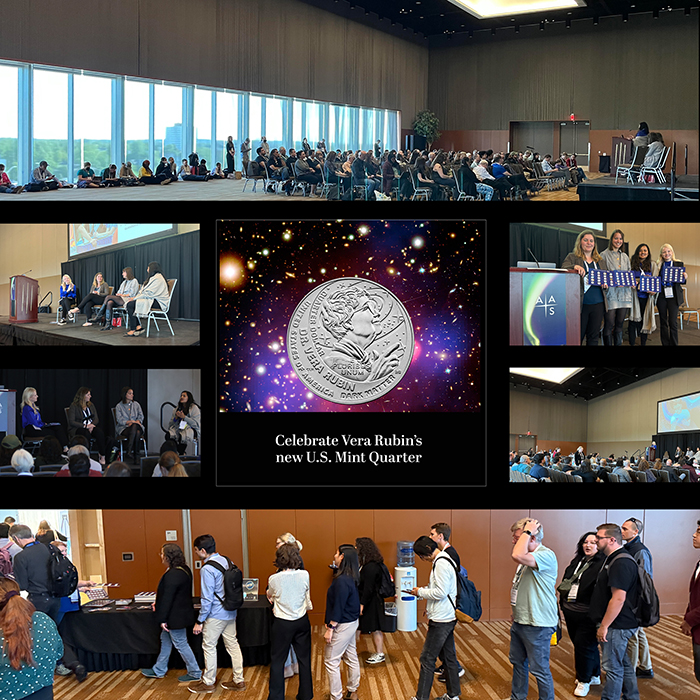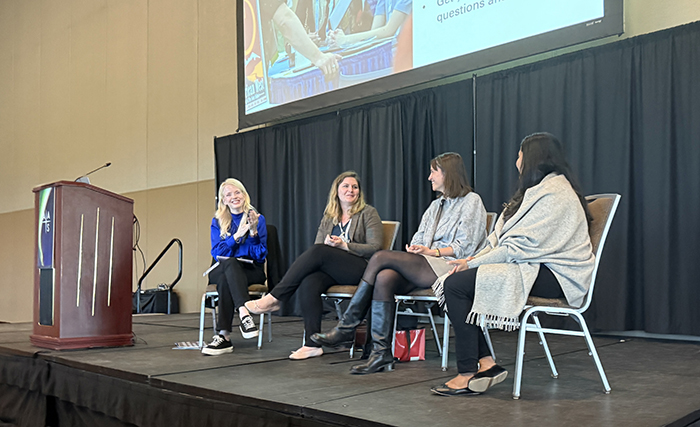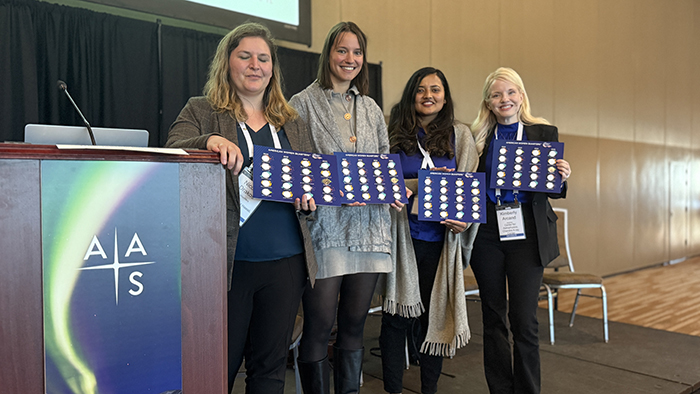Vera Rubin Celebration Town Hall
The Vera Rubin Celebration Town Hall at AAS 246 brought together a crowd of about 200 attendees to honor the scientific legacy and inspirational career of Dr. Vera Rubin. Held at the Dena’ina Civic & Convention Center in Anchorage Alaska during the American Astronomical Society (AAS) meeting, the session overflowed with enthusiastic participants—many sitting on the floor—eager to celebrate the astronomer whose groundbreaking work on galaxy rotation curves provided the first compelling evidence for dark matter.

Dr. Grant Tremblay, former senior vice president of the AAS, welcomed the audience setting the stage for an evening of reflection, discovery, and inspiration, and noting his personal interaction with Rubin at one of his first AAS meetings. The program featured a video highlighting Rubin’s pivotal scientific contributions, archival footage of her career, and visuals of the newly released Vera Rubin quarter from the United States Mint.

The event included a science panel, moderated by Dr. Kimberly Arcand (SAO/CXC), featured three dynamic, early-career astrophysicists who are building upon Rubin’s legacy.
- Dr. Nicole Drakos (University of Hawai‘i, Hilo) discussed galactic dynamics and how Rubin’s meticulous observations continue to influence current studies of dark matter.
- Dr. Amruta Jaodand (SAO/CXC) connected Rubin’s legacy to the high-energy universe, emphasizing how missions like Chandra probe the structure of
galaxies and the dark matter halos they reside in. - Dr. Maddie Lucey (University of Pennsylvania) spoke to the future,
showcasing how the Vera C. Rubin Observatory is poised to extend Rubin’s
impact through next-generation dark matter research.

Following the panel, there was a moderated discussion and Q&A that explored key questions in the field of astrophysics today, including how Rubin’s approach to observational rigor informs current methodologies, and what her example teaches us about mentorship, perseverance, creativity, and the collaborative nature of science.

A particularly moving moment came when attendees noted they too had personal
stories of meeting Vera Rubin or being influenced by her. Young audience members, including several women who referred to the panelists as their icons, asked thoughtful questions that underlined the importance of representation and mentorship in astronomy.
The evening concluded with the sharing of the U.S. quarter featuring Vera Rubin that was released on June 3, 2025, which was graciously provided by the United States Mint. Attendees were among the first in the U.S. to receive it—a fitting tribute to a scientist whose impact continues to shape both research and culture.
Category:
- Log in to post comments
